Get To Know Foam Roller Guide
Foam rollers are exercise devices which are specially designed for massage therapy and fitness. Foam rollers are often long and cylindrical although they can come in several other shapes, sizes, and textures based on their intended use. Foam rollers can be used for self-massage, and they help relieve pressure at certain points in the body and assist them to return to normal function and speed up muscle recovery. When the muscles of the body are performing normally, it means they are elastic, healthy and ready to function at a moment’s notice. The process of relieving tight muscles and tension inherent in the muscles is called myofascial release.
Long passed the time when fitness was the play field of only the athletes and stars, people have become more aware and more cautious about their physical health and improvement today. Foam rollers were originally considered a tool for the professional sportsmen but with the advent of time and the availability of products for the benefit of the common people, it has now become a remedy for all. This physical therapy equipment is now frequently found and used in lots of places such as gyms, group exercises, and yoga classes.
Foam rolling or self-myofascial release (SMR), is a technique used for the relaxation of stiffened muscles. Knots are usually formed in the muscles causing pain in another part of the body when pressed. These muscle knots can be treated through foam rollers. Foam rollers apply pressure on these knots molding them into softer knots and gradually eliminating them. When pressure is applied via foam rolling, it aids in reducing muscle tension and also improves the process of recovery. Foam rollers are the excellent tools in bringing back the elasticity and vitality of a healthy muscle.
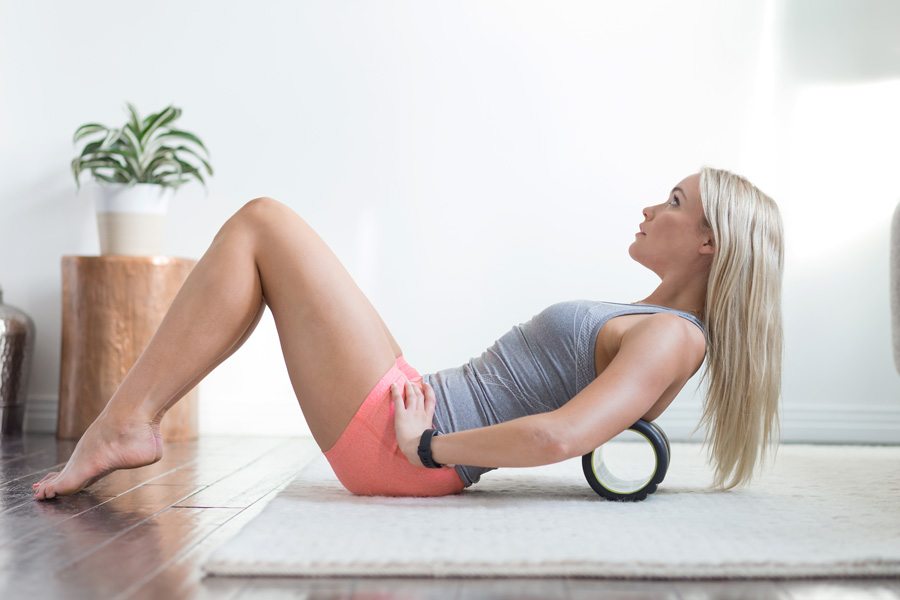
Guide For Choosing A Foam Roller In Different Types
Before knowing how to use foam rollers, you should have to choose a suitable foam rollers for yourself.
When choosing a foam roller, not all foam rollers are suitable for everyone. Foam rollers are offered in different types which vary, depending on their health benefits and usage. Choosing from an array of foam rollers from a supermarket can become a little troubling but they are being classified on the basis of their features, thus making it easier to get one.
Foam rollers come in different shapes, sizes and textures. One of the most important factors in choosing a foam roller is its density or firmness. The density and firmness of the foam roller determine the intensity of the massage. Hard foam rollers provide a deeper and more intense massage while soft rollers provide a gentler massage. Generally foam roller types can be categorized into the following groups:
Low Density Foam Rollers – The Lightest One
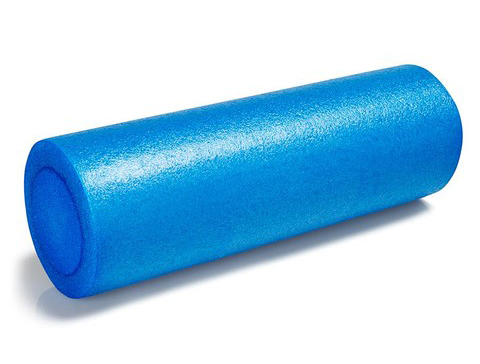 Low density foam rollers are usually made of expanded Polyethylene foam. The expanded PE foam roller is with low density along with low firmness. They are soft to touch and press. Low-density foam rollers are recommended for sore muscles, normally from a hectic day or a tough workout. According to therapists, these foam rollers are great for massaging and soothing the muscles.
Low density foam rollers are usually made of expanded Polyethylene foam. The expanded PE foam roller is with low density along with low firmness. They are soft to touch and press. Low-density foam rollers are recommended for sore muscles, normally from a hectic day or a tough workout. According to therapists, these foam rollers are great for massaging and soothing the muscles.
The unique feature of soft density foam rollers is that they have more cushion to them and are designed for those who desire comfort rather than the deeper massage of standard and firm rollers. The soft density provides a massage which is gentler on the muscles while the roller maintains its form, even after being used heavily and repeatedly. But the main drawback is they can not be much durable same as EVA foam rollers or EPP foam rollers.
Medium Density Foam Rollers – All-Purpose Standard Foam Rollers
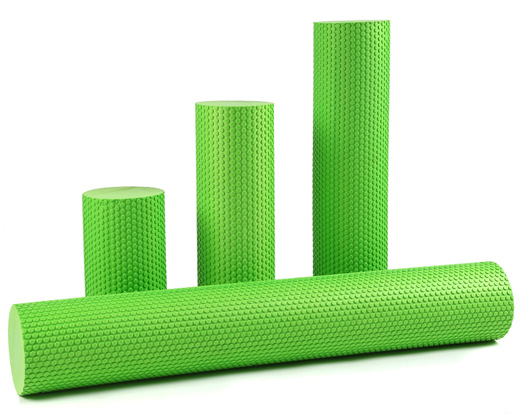 Medium density foam rollers are usually made of closed cell EVA foam. They can be used for stretching exercises, releasing pressure from the tense muscles or trigger points and for several other muscle problems. Firm density foam rollers are the densest and they are hard to press or to sit on. These foam rollers are specifically used for concentrated myofascial release, where the muscle knots are causing deep and intense pain. The firm density foam rollers are also recommended for athletes by the physical therapists for a quick recovery of a muscle injury.
Medium density foam rollers are usually made of closed cell EVA foam. They can be used for stretching exercises, releasing pressure from the tense muscles or trigger points and for several other muscle problems. Firm density foam rollers are the densest and they are hard to press or to sit on. These foam rollers are specifically used for concentrated myofascial release, where the muscle knots are causing deep and intense pain. The firm density foam rollers are also recommended for athletes by the physical therapists for a quick recovery of a muscle injury.
Standard density foam rollers have a medium firmness and their universal quality makes them perfect for both massage and exercise. They provide the muscles with enough hardness for a deep massage while having moderate cushion. The medium density of this kind of roller foam also makes it ideal for use as stable props in Pilates and yoga routines.
High Firmness Foam Rollers
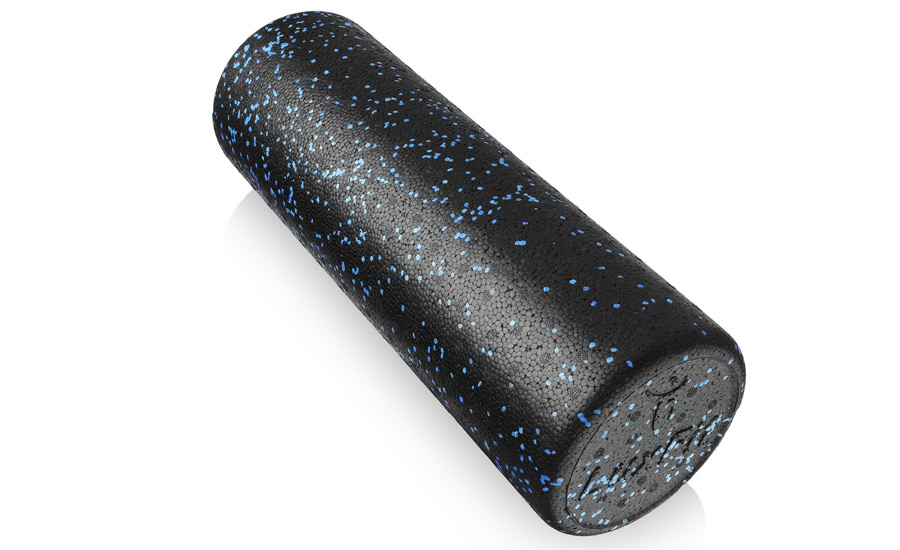
This type of foam rollers are usually made by expanded Polypropylene foam (EPP foam). They feature a tough and hard surface, but are of light weight meaning low density. A firm EPP foam roller is ideal for users who desire a deeper and more intense massage. This roller is perfect for athletes and individuals involved in serious physical activities who often have tense, tight muscles which will benefit from the penetrating nature of these rollers. In addition, the intense myofascial release opens up constricted fascia and encourages muscle recovery.
Bumpy Foam Rollers – Trigger Point Grid Foam Roller
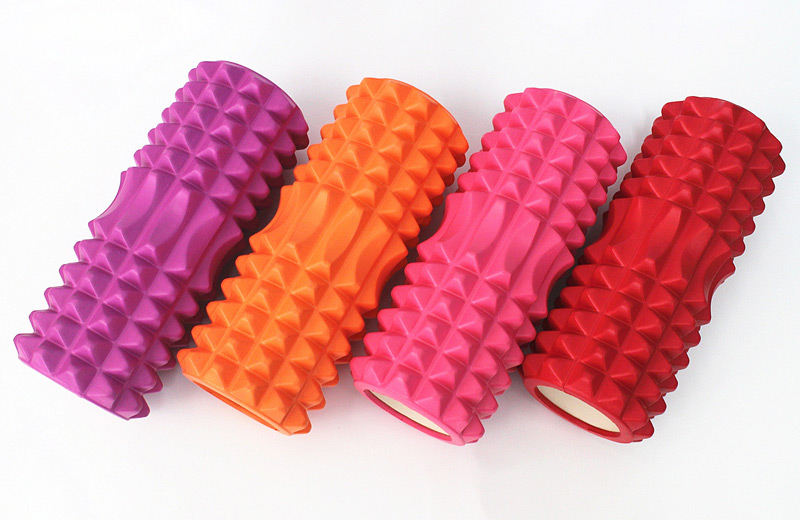
Bumpy foam rollers are also known as trigger point grid foam rollers. They are made of EVA foam material and have bump knobs or waves-like pattern. These are designed to dig the trigger points for a quick recovery. Bumpy foam rollers are a great muscle tension reliever in areas such as neck and shoulder where there are multiple trigger points.
What Materials Are Used For Making Foam Rollers?
Foam rollers are made of foam cylinders or half cylinders, normally 15 cm width and 30 cm length or up to 60 cm. Foam rollers differ in their shape, sizes and in the material used to make them. This section of this post is focused on the various materials used in making foam rollers, all of which differ in density and firmness. These materials include:
Expanded Polyethylene (EPE) Foam – Low Density And Low Firmness
Expanded Polyethylene foam is used to make the standard foam rollers which retains its shape longer than those rollers with a two piece construction. But Polyethylene foam rollers tend to be of lower quality so EVA foam or EPP foam rollers tend to last longer. They are quite soft and are of low density.
Ethylene Vinyl Acetate (EVA) foam – Flexible Density And Firmness – Usually Medium
Ethylene Vinyl Acetate foam, also EVA foam, is one type of closed cell foam material which is an excellent shock absorbent material, also light weight, durable and hard wearing. This material is ideal for use in gyms and clinics and is perfect for those who do not want a firm foam roller. However, there is the high density EVA which can be used for more strenuous physical activities.
Expanded Polypropylene (EPP) Foam – Low Density But High Firmness
Polypropylene material is used to make expanded polypropylene foam rollers and looks like it is made from tightly compressed polystyrene ball with smooth outer surfaces. This material is used to make rollers intended for moderate to heavy use and is ideal for gyms and clinics.

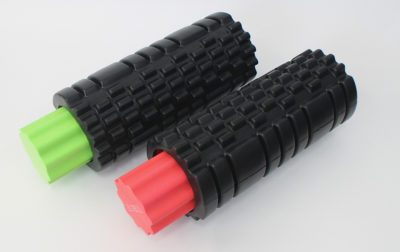
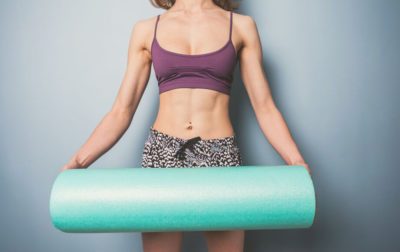
Leave A Comment